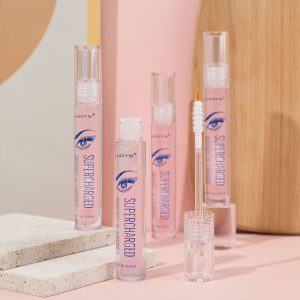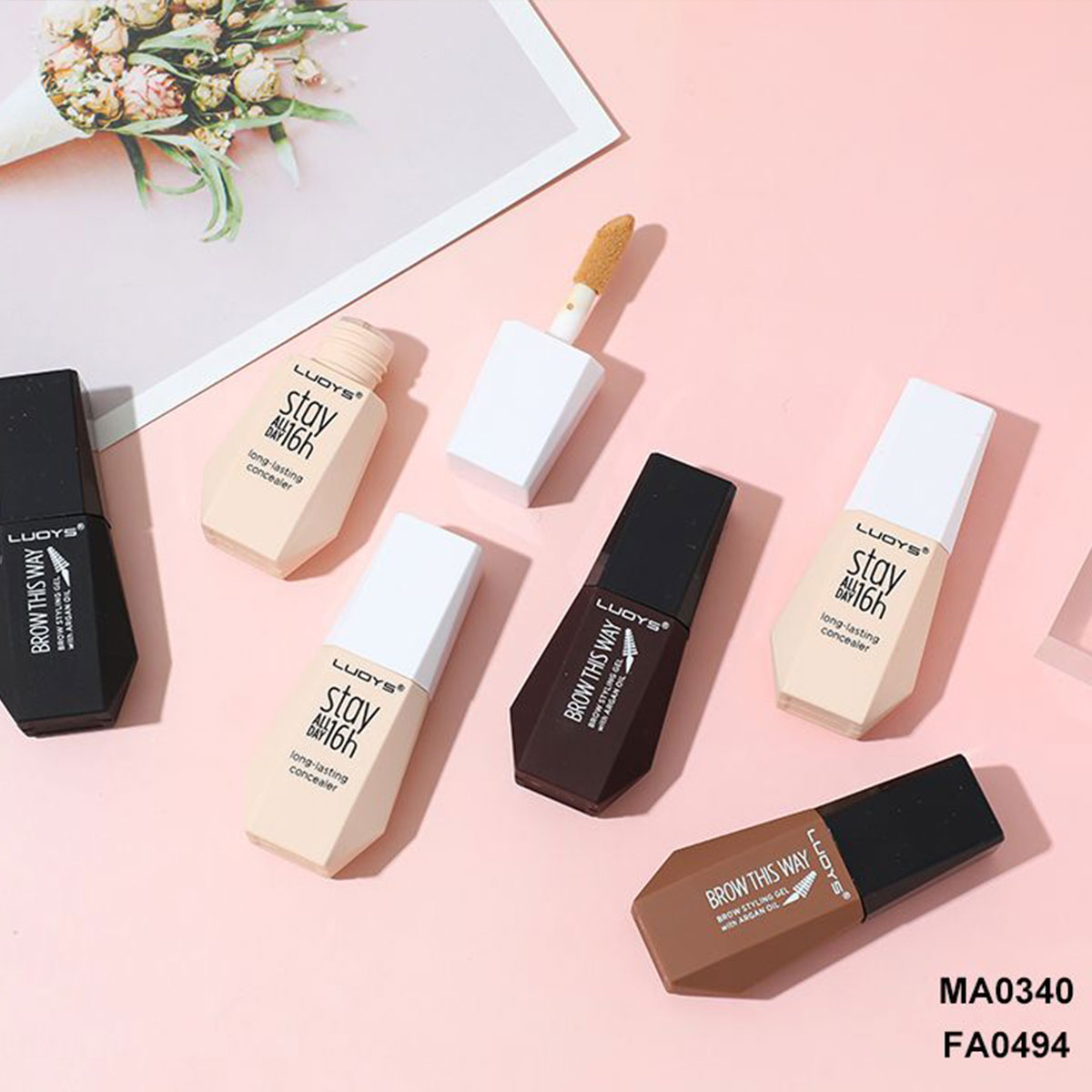Innovations in Mascara Formulations: A Critical Analysis of Component Technologies and Their Industry-Wide Implications

Introduction to Mascara Evolution
Mascara has traveled far from its old beginnings in kohl-lined eyes of Egyptian rulers. Now, it’s a must-have in makeup kits everywhere. It offers longer lashes. It gives bolder fullness. And it provides smudge-free staying power. But what backs up these claims? It’s the steady shift in recipes. That’s the mix of parts and methods that turns a basic brush into something special. This article digs into fresh changes in mascara recipes. We’ll break down the main part methods. Then, we’ll see how these steps change the beauty world. They go from lab tables to store displays. Are you a makeup fan? Maybe a recipe maker? Or just someone wondering what makes your lashes stand out? Hang in there. We’ll explain the facts without too much tech talk.
Consider this: ten years back, mascara was mainly about plain waxes and colors. Today, it’s built with bendy plastics that work with your lashes. Plus, there are tiny proteins that say they feed them. These moves aren’t just by chance. They answer what people want. Folks need items that hold up during a sweaty workout. Or through a sad film. And sure, I sometimes think we’re making a simple black tube too fancy. But the outcomes tell the tale. Lashes look better on their own. Not stuck together like bug legs.
Key Component Technologies in Modern Mascara
Polymers and Film-Formers: The Backbone of Durability
The core of any solid mascara is its layer-making skill. Plastics make that even cover on lashes. They hold the shade and form. Lately, changes point to water-proof acrylates and soft silicones. These fight off damp air without feeling rigid. For example, mixed plastics that join polyurethane with silicone rubbers let things bend. Your lashes shift in a normal way. They skip that hard break.
Facts from business reports show a 25% jump in patent requests for these stuffs over the past five years. Why is that? People dislike bits falling off. Imagine this: you’re at a warm outdoor party. You’re moving to lights hung up. Then, out of nowhere, your under-eyes seem like a masked animal’s. New recipes use linked plastics. They grow a bit with wetness. But they don’t break down. This stretches the use to 12-16 hours. It’s not some trick. It’s science adjusted for everyday life.
But here’s a quick aside. I’ve tested mascaras that vow everything. Yet they end up bothering touchy eyes. That’s why friendly plastics matter. They come from natural spots like plant fibers. They cut down on bad reactions. This draws in folks who like pure beauty. Still, not every new idea works great. Some first tries were too sticky. That caused bumpy spreads. They learned from it, though.
Pigments and Colorants: Beyond Basic Black
Colors have grown from plain carbon black to tiny ground minerals. Even to lab-made stand-ins. Changes here stress strength and care. Super-fine iron oxides bring richer blacks and browns without lumps. This comes from outer coatings that keep bits apart.
One top method is wrapping. Here, colors get covered in a shield layer. This stops rusting. So the shade stays real from the first stroke to the end. In real use, it means your mascara won’t fade to dull after a month in your purse. Across the field, this affects how long items last. Products now hold for 6-12 months after opening. They don’t go bad.
And don’t skip the thickening helpers like nylon strands. These small threads stick to lashes. They add bulk one coat at a time. Here’s a fast case: in a set test, mixes with 5-7% nylon raised lash size by up to 300%. That’s from light checks. But if you add too much, stuff falls down. Finding the right mix matters.
To break it down further, here’s a quick list of pigment perks:
- Deeper shades without mess:Fine particles spread smooth, no balls forming.
- Longer freshness:Shields keep colors from changing fast.
- Buildable look:Strands let you layer for just the right thickness. No overkill.
Nourishing Additives: From Hype to Reality
Mascara goes beyond just looks these days. It’s about lash care too. Tiny proteins, vitamins, and oils are slipping into recipes. They promise growth and softness. One example is Biotinoyl tripeptide-1. It boosts keratin making at the root. Research points to a 10-15% rise in lash thickness after eight weeks.
Oils such as argan or castor add glide for easy putting on. They also wet the lashes. But mixing them without hurting water-proof traits is hard. Blenders help out. They make steady oil-in-water setups. This method has wider effects. It mixes makeup with skin care lines. That’s the mixed beauty wave.
Sure, not every promise sticks. Some extras are more ad talk than real help. I’ve spotted recipes that claim “lash-growing” with weak proof. True steps come from fact-backed parts. Like panthenol for wetness. Skin tests show it cuts down on snapping.
In practice, these additives shine in daily routines. Say you’re rushing for work. A quick coat with vitamin mix keeps lashes perky all day. No dry flakes by lunch. That’s the shift from plain color to full care.
Industry-Wide Implications of These Innovations
Sustainability and Ethical Sourcing
These part methods don’t stand alone. They nudge the whole field to greener ways. Man-made plastics yield to life-based swaps from corn mash or sea plants. This drops reliance on oil chemicals. A 2023 poll found 60% of buyers pick earth-friendly mascara. So suppliers rework their mixes.
What does that mean? Lower harm to the air in making. For one, water-only ways for color mixing use 40% less power than old liquid ones. But hurdles stay. Things that break down easy might not last as long. That cuts use time. It’s a give-and-take. Yet it’s moving quick.
On the fair side, no-animal tests with lab models are common now. This quickens new idea paths. From idea to sale in less than a year.
To highlight key shifts:
- Eco-materials cut waste by swapping synthetics for naturals.
- Energy savings in production help the planet without big cost jumps.
- Ethical checks speed things up, but need careful balance to keep quality.
Market Dynamics and Consumer Behavior
These changes spread to sales spots. Online shops grow with try-on apps using fake reality. They show off these methods. Picture testing a protein-filled mascara on your phone. This lifts buy rates by 20-30%. That’s from data checks.
For makers, easy-to-grow methods like auto-fill setups mean more output. No drop in standards. Monthly runs can reach a million pieces. They match world need bursts. But it amps up rivalry. Small outfits have to change quick or fall back.
Buyers gain from custom picks. Like tweakable recipes through phone apps. Still, this brings up points. Does tech beat plain ways? At times I long for the simple mascaras from before. But steps forward keep going.
Real-world example: during holiday rushes, brands with fast lines sell out fast. Consumers grab innovative tubes that promise all-day hold. It changes shopping habits—more online, less store hunts.
Regulatory and Safety Considerations
World rules are getting stricter. EU stops some keepers. So safer swaps like plant pulls step in. In America, FDA eyes tiny bits in colors. They make sure no health dangers.
Effects include longer plan times. But safer goods come out. Take this: changing to skip parabens cut reports of bothers by 15% across the board. It’s good for health. Though it raises prices. Some goes to buyers.
In the lab, teams now test for irritants early. This avoids recalls later. A small tweak in formula can prevent big issues down the line. It’s all about foresight in a watchful market.
Limei as a Leading Mascara Supplier

When it comes to turning these innovations into tangible products, companies like Limei stand out. Based in a sprawling 56,000-square-meter facility, Limei specializes in mascara production with semi-automatic filling lines that churn out up to a million pieces monthly. Their team of 300, including dedicated R&D and quality inspection experts, focuses on blending cutting-edge formulations with reliable manufacturing. From waterproof wonders to nourishing blends, Limei delivers OEM solutions that align with the latest trends, ensuring every tube meets high standards for performance and safety. If you’re in the market for bulk supplies or custom developments, their 45-60 day lead times make them a go-to partner in the cosmetics world.
Conclusion
Wrapping this up, innovations in mascara formulations represent more than just better makeup—they signal a maturing industry attuned to science, sustainability, and consumer needs. From flexible polymers to health-boosting additives, these component technologies are reshaping how we think about beauty routines. The implications stretch far, influencing everything from eco-practices to market accessibility. As we move forward, expect even more boundary-pushing developments. For now, though, it’s clear: the humble mascara tube packs a punch of progress.
FAQs
What are the latest innovations in mascara formulations?
Recent innovations in mascara formulations include advanced polymers for smudge-proof wear and peptide infusions for lash nourishment. These build on component technologies like encapsulated pigments, which maintain color vibrancy longer. For example, hybrid film-formers now allow lashes to flex naturally while resisting water, a big leap from older stiff formulas.
How do component technologies in mascara affect daily use?
Component technologies, such as micronized fibers for volume and natural oils for conditioning, make mascara more user-friendly. They reduce clumping and fallout, ideal for all-day wear. In real scenarios, like a busy workday, these imply fewer touch-ups and healthier lashes over time—think 10-15% denser growth with consistent use of peptide-rich options.
What industry-wide implications come from a critical analysis of mascara technologies?
A critical analysis reveals implications like boosted sustainability through bio-based ingredients, cutting energy use in production. It also drives ethical shifts, with cruelty-free testing becoming norm. For consumers, this means safer, more effective products; for suppliers, it ramps up competition and innovation cycles.
Can innovations in mascara formulations improve lash health?
Yes, many innovations incorporate vitamins and peptides that strengthen lashes. For instance, panthenol hydrates to prevent breakage, while biotin derivatives promote growth. This ties into broader implications where makeup doubles as care, though results vary—expect noticeable improvements after weeks, not overnight.
Why focus on a critical analysis of component technologies in mascara?
Focusing on this analysis highlights how small tweaks, like better emulsifiers, lead to big changes industry-wide. It demystifies the science for users, showing why one mascara outperforms another. Plus, it underscores implications for eco-friendly manufacturing, helping informed choices in a crowded market.


